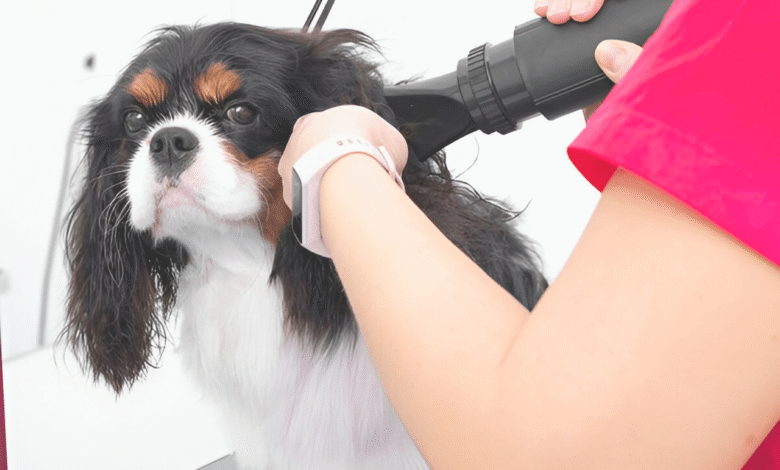
How Often Should You Bathe Your Dog? Vet-Backed Advice
How often should you bathe your dog? Vet-approved bathing frequency guide for all breeds. Learn proper techniques to keep your pup clean.
How often should you bathe your dog? This is one of the most common questions pet owners ask, and the answer isn’t the same for every dog. Bathing frequency depends on several factors, including breed, coat type, lifestyle, and skin health. While some dogs may only need a bath every few months, others require more frequent cleaning to stay fresh and comfortable. Over-bathing can strip natural oils from your dog’s skin, leading to dryness and irritation, while under-bathing can result in odors, dirt buildup, and even skin infections. To keep your furry friend in top condition, it’s essential to find the right balance based on their individual needs.
Understanding your dog’s specific grooming requirements is key to maintaining a healthy coat and skin. Factors like activity level, allergies, and environmental conditions all play a role in determining the ideal bathing schedule. By following vet-backed advice, you can ensure your dog stays clean without compromising their skin health. In this guide, we’ll break down the best bathing practices for different breeds, lifestyles, and skin conditions, helping you make informed decisions for your pet’s well-being. Whether your dog loves rolling in the mud or prefers lounging indoors, you’ll learn how to keep them looking and feeling their best.
Breed and Coat Type
Different dog breeds have varying grooming needs. Short-haired breeds like Beagles or Dalmatians typically require less frequent bathing around once every 2-3 months because their coats don’t trap as much dirt. On the other hand, long-haired breeds such as Golden Retrievers or Shih Tzus may need bathing every 4-6 weeks to prevent matting and tangles. Dogs with double coats, like Huskies, have natural oils that protect their skin, so excessive bathing can disrupt this balance.
Skin Conditions and Allergies
If your dog suffers from skin allergies, infections, or dermatitis, your vet may recommend a specific bathing schedule. Medicated shampoos can help soothe irritated skin, and frequent baths (once a week or bi-weekly) may be necessary to remove allergens. Always consult your veterinarian before adjusting your dog’s bathing routine if they have skin issues.
Activity Level and Lifestyle
Active dogs that spend a lot of time outdoors, rolling in dirt, or swimming will need more frequent baths. Working dogs or those who love mud might require bathing every 1-2 weeks. Conversely, indoor dogs with minimal outdoor exposure can go longer between baths. Always rinse your dog thoroughly after swimming to remove chlorine or saltwater, which can dry out their skin.
Age and Health Status
Puppies and senior dogs have different bathing needs. Puppies can be bathed once a month unless they get excessively dirty, while older dogs with arthritis or sensitive skin may need gentler, less frequent baths. Always use lukewarm water and a mild shampoo to avoid discomfort.
Seasonal Considerations
Dogs may need more frequent baths in summer due to increased outdoor activity and exposure to dirt, pollen, and pests. In winter, bathing too often can lead to dry, flaky skin, so reducing frequency and using a moisturizing shampoo is beneficial.
General Bathing Guidelines Based on Dog Type
Short-Haired Breeds
Bathe Your Dog every 2-3 months unless they get particularly dirty, as their coats don’t trap much debris. Use a gentle, moisturizing shampoo to maintain skin health since their natural oils are more exposed. Supplement with weekly brushing using a rubber curry brush to distribute oils and remove loose hair effectively.
Long-Haired Breeds
Schedule baths every 4-6 weeks to prevent painful matting and keep their luxurious coats manageable. Always follow shampooing with a quality conditioner to maintain softness and prevent breakage. Commit to daily brushing sessions with appropriate tools to remove tangles before they form.
Double-Coated Breeds
Limit bathing to every 6-8 weeks to protect their insulating undercoat and natural waterproofing oils. During seasonal shedding periods, use a de-shedding shampoo to help manage excessive hair loss. Never shave these breeds – instead use undercoat rakes and slicker brushes regularly between baths.
Wrinkly Breeds
Bathe Your Dog every 2-3 weeks to prevent infections in their characteristic skin folds. After bathing, meticulously dry between all wrinkles using a soft cloth or pet dryer on cool setting. Between baths, use vet-approved antibacterial wipes to keep folds clean and dry.
Active/Outdoor Dogs
Bathe Your Dog as needed (typically every 2-4 weeks) depending on their outdoor adventures. Choose a degreasing shampoo formulated to cut through mud, grass stains, and other outdoor grime. Always rinse thoroughly after swimming to remove chlorine, salt, or lake bacteria from their coat.
Dogs with Skin Conditions
Follow your veterinarian’s prescribed bathing schedule, which often requires weekly medicated baths. Allow medicated shampoos to sit for the full recommended contact time before rinsing. Always follow with any prescribed topical treatments or moisturizers to maintain skin barrier function.
Puppies
Bathe Your Dog only when necessary using an extra mild puppy-formulated shampoo. Keep initial baths brief and positive to establish lifelong good grooming habits. Ensure complete drying afterwards as puppies chill easily due to their smaller body mass.
Senior Dogs
Reduce bathing frequency to every 8-12 weeks as aging skin becomes more delicate and prone to dryness. Select oatmeal or hypoallergenic shampoos to soothe sensitive senior skin. Provide extra bathing support like non-slip mats and consider using a shower bench for larger arthritic dogs.
How to Bathe Your Dog Properly
Prepare Your Bathing Station
Set up a non-slip mat in your tub or sink and gather all supplies before starting. Choose a dog-specific shampoo formulated for your pet’s coat type and skin needs. Keep towels, a brush, cotton balls for ears, and treats within easy reach to make the process smooth.
Brush Before Getting Wet
Always brush your dog thoroughly to remove loose fur and tangles before bathing. This prevents painful matting that tightens when wet and helps shampoo penetrate better. Pay special attention to problem areas like behind the ears and under the legs where knots commonly form.
Use Proper Water Temperature
Test the water with your wrist to ensure it’s lukewarm – not too hot or cold. Gently wet your dog starting from the neck down to avoid startling them. Use a handheld sprayer or cup to control water flow, keeping streams away from sensitive eyes and ears.
Apply Shampoo Correctly
Dilute concentrated shampoos as directed and work into the coat using gentle circular motions. Focus on dirt-prone areas like paws, belly, and tail base but avoid the face. Let the shampoo sit for recommended time (usually 5-10 minutes) for maximum effectiveness before rinsing.
Rinse Thoroughly
Rinse until water runs completely clear, checking for leftover suds in thick fur. Leftover shampoo residue can cause skin irritation and itching. Pay special attention to double-coated breeds and areas where soap hides like armpits and under the collar.
Dry Completely
Blot your dog with absorbent towels instead of rubbing to prevent tangles. Use a pet-safe dryer on low heat if tolerated, keeping it moving constantly. Ensure no moisture remains between toes, skin folds, or ear flaps where bacteria can grow.
Create Positive Associations
Offer high-value treats throughout the process to build good bath-time memories. Keep sessions brief for nervous dogs, gradually increasing duration. Finish with playtime or a favorite activity to end on a happy note and reduce future resistance.
Read More: Common Household Items That Are Toxic to Pets
Conclusion
How often should you Bathe Your Dog? The answer ultimately depends on your pet’s unique needs, but most dogs thrive with bathing every 4-6 weeks. Remember that factors like breed, coat type, activity level, and skin health all play crucial roles in determining the ideal Bathe Your Dog schedule. By following vet-recommended guidelines and paying attention to your dog’s skin and coat condition, you can maintain their hygiene without over-drying their skin or causing irritation.
When in doubt, consult your veterinarian for personalized advice, especially if your dog has skin sensitivities or medical conditions. With the right approach, you’ll keep your canine companion clean, comfortable, and healthy. Regular brushing between Bathe Your Dog, proper shampoo selection, and thorough rinsing are just as important as frequency. By finding the perfect balance for your Bathe Your Dog needs, you’ll ensure they always look and feel their best while protecting their skin’s natural defenses.
Can I Bathe Your Dog once a week?
Yes, but only if recommended by a vet, especially for dogs with skin conditions or high outdoor activity.
What happens if I don’t Bathe Your Dog enough?
Dirt, oils, and odors can build up, leading to skin infections or matted fur in long-haired breeds.
Can I use human shampoo on my dog?
No, human shampoos can disrupt your dog’s pH balance, causing dryness and irritation.
How do I know if my dog needs a Bathe Your Dog?
Signs include a strong odor, visible dirt, excessive scratching, or a greasy coat.
Do dogs feel better after a Bathe Your Dog?
Most dogs feel fresher, but some may dislike water. Use positive reinforcement to make baths enjoyable.







